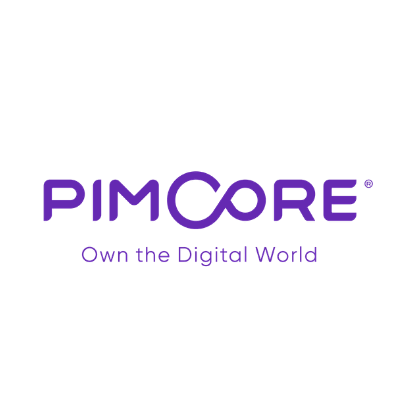Description

Pimcore

Semarchy xDM
Comprehensive Overview: Pimcore vs Semarchy xDM
Pimcore
a) Primary Functions and Target Markets
Pimcore is an open-source digital experience platform with a strong focus on data and content management. Its primary functions include:
- Product Information Management (PIM): Centralizes and manages product data, ensuring accuracy and consistency across all channels.
- Digital Asset Management (DAM): Efficiently manages multimedia content, making it easily accessible and reusable.
- Content Management System (CMS): Offers flexibility in creating and managing web content for varied digital experiences.
- Customer Data Management (CDM): Aggregates and manages customer data to drive personalized marketing.
Target Markets: Pimcore targets a wide range of industries, including retail, manufacturing, distribution, and services, with particular attention to businesses needing robust digital asset and product information management capabilities.
b) Market Share and User Base
While Pimcore doesn't have a dominant market share compared to proprietary solutions from larger vendors like Adobe or Salesforce, its open-source nature attracts a broad user base, from startups to large enterprises seeking cost-effective and customizable solutions. Its community and partners contribute to a steady growth in adoption.
c) Key Differentiating Factors
- Open Source Model: Pimcore's open-source nature allows extensive customization, flexibility, and no licensing fees, appealing to businesses with technical resources.
- Integrated Solution: Combines multiple data management capabilities in a single platform (PIM, DAM, CMS, and CDM).
- Developer-Friendly: Provides robust APIs and a flexible architecture for integration with existing systems.
Semarchy xDM
a) Primary Functions and Target Markets
Semarchy xDM is a data management platform focusing on the following:
- Master Data Management (MDM): Centralizes and manages enterprise-critical data, such as customer, product, and supplier information, to maintain a single source of truth.
- Data Integration and Quality: Ensures high-quality and consistent data across systems and platforms through sophisticated integration and data quality tools.
- Data Governance: Facilitates maintenance of data governance policies and processes.
Target Markets: Semarchy xDM serves medium to large enterprises across various sectors like finance, healthcare, retail, and manufacturing, specifically organizations requiring robust master data management and governance capabilities.
b) Market Share and User Base
Semarchy, being a niche player in the MDM market, has a smaller share compared to major players like Informatica or IBM. However, it has a growing and dedicated user base, particularly popular among organizations looking for agile MDM solutions and rapid implementation.
c) Key Differentiating Factors
- Agile MDM Approach: Quick to deploy and easy to scale, allowing businesses to start small and grow their MDM capabilities.
- User-Centric Interface: Provides business users with intuitive tools to manage their own data domains, reducing IT dependency.
- Hybrid-Cloud Deployment: Offers flexible deployment options, including on-premise, cloud, or hybrid environments.
Comparison Summary
- Customization and Flexibility: Pimcore's open-source model provides maximum flexibility, whereas Semarchy xDM focuses on structured master data management with a user-centric, agile approach.
- Target Market Needs: Pimcore addresses a broader range of data management needs with an emphasis on digital experiences, whereas Semarchy xDM specializes in master data management and governance.
- Market Position: Both target specific segments within the data management space, with Pimcore being more open-source and developer-driven, and Semarchy focusing on rapid deployment and user accessibility.
- Integration and Functionality: Pimcore integrates PIM, DAM, CMS, and CDM in one platform, while Semarchy excels in MDM, integrating governance and data quality features.
In conclusion, the choice between Pimcore and Semarchy xDM depends on the specific business requirements, the extent of customization needed, and the focus on content versus data management.
Contact Info

Year founded :
2009
+43 662 230991
Not Available
Austria
Not Available

Year founded :
Not Available
Not Available
Not Available
Not Available
Not Available
Feature Similarity Breakdown: Pimcore, Semarchy xDM
Pimcore and Semarchy xDM are both data management platforms, but they serve slightly different purposes and cater to different aspects of data management solutions. Here’s a breakdown of their feature similarities and differences:
a) Core Features in Common
-
Data Management:
- Both offer robust data management capabilities, focusing on handling large volumes of data efficiently.
-
Master Data Management (MDM):
- Both platforms offer master data management features to ensure data consistency and accuracy across systems.
-
Data Integration:
- They provide integration capabilities to connect with a variety of data sources and third-party applications.
-
Data Governance:
- Each provides tools for data governance to ensure compliance with regulations and to maintain data quality.
-
Multi-domain Capability:
- They support multi-domain management, allowing users to manage different types of data domains such as customer, product, location, etc.
-
Scalability and Flexibility:
- Both platforms are scalable and flexible, designed to grow with an organization’s needs and integrate with existing systems.
b) User Interfaces Comparison
-
Pimcore:
- Pimcore’s user interface is generally more focused on content and product information management. It is designed to be user-friendly with a modular interface, allowing users to customize based on their specific needs.
- Pimcore also includes features for digital asset management which are visually oriented, providing a more intuitive experience for handling media and content.
-
Semarchy xDM:
- Semarchy’s interface is more data-centric and oriented towards data stewards and IT users. It is built to support complex data workflows with a focus on data visualization, hierarchy management, and dashboarding.
- The interface emphasizes ease-of-use for managing and visualizing master data and includes tailored views and interactive dashboards for different user roles.
c) Unique Features
-
Pimcore:
- Digital Asset Management (DAM): Offers robust DAM capabilities, allowing businesses to manage media assets alongside their data.
- Content Management System (CMS): Pimcore includes a comprehensive CMS for managing website and digital commerce content.
- E-commerce Framework: Allows for managing digital commerce activities, integrating product information management with e-commerce capabilities.
-
Semarchy xDM:
- Data Discovery and Governance: Provides advanced data discovery tools and data governance features that are deeply integrated with its MDM capabilities.
- Agile MDM: Focuses on an agile approach to MDM, allowing for quick iterations and enhancements which is ideal for businesses looking to rapidly implement MDM solutions.
- Semantics and Metadata Management: Offers strong support for managing data semantics and metadata which can be a significant advantage for organizations needing detailed data lineage and auditing.
In summary, while both Pimcore and Semarchy xDM share common features relating to data management, they differentiate themselves through specialized features and user interface orientations that make each platform better suited for particular organizational needs. Pimcore leans toward digital asset and content management, while Semarchy xDM excels in semantic data governance and agile MDM.
Features

Product Information Management
Content Management
Digital Asset Management
Customer Data Management

Data Quality
Master Data Management
Data Integration
User Collaboration
Best Fit Use Cases: Pimcore, Semarchy xDM
Pimcore and Semarchy xDM are both powerful data management platforms, but they cater to different needs and scenarios. Below, I outline the best fit use cases for each:
a) Pimcore
Use Cases for Pimcore:
-
Digital Commerce and Retail:
- Product Information Management (PIM): Ideal for retailers and e-commerce businesses that need to manage large catalogs of product information, including images, prices, descriptions, and attributes. Pimcore’s open-source nature allows for custom workflows and scalability.
- Multi-Channel Publishing: Businesses that require distributing product information across multiple platforms and channels can leverage Pimcore’s robust API and content management capabilities.
-
Digital Asset Management (DAM):
- Companies that require central management of digital assets such as images, videos, and documents can benefit from Pimcore’s DAM functionality. Creative agencies and marketing departments are typical users here.
-
Content Management:
- Organizations in need of managing and delivering personalized digital experiences, such as corporate websites or marketing campaigns, can utilize Pimcore’s content management and personalization capabilities.
-
Master Data Management (MDM):
- Enterprises that manage various domains of master data beyond products, such as customer or vendor data, can use Pimcore, though typically less comprehensive than dedicated MDM solutions.
-
Industries:
- Pimcore is advantageous for businesses in retail, manufacturing, fashion, and logistics, particularly those requiring robust solutions for managing complex product hierarchies and digital content.
-
Company Size:
- Medium to large enterprises that require a flexible, customizable platform around digital commerce and customer experience management. Pimcore is also suitable for companies that have internal development capabilities to leverage its open-source foundation.
b) Semarchy xDM
Use Cases for Semarchy xDM:
-
Enterprise MDM Solutions:
- Companies that need to integrate, cleanse, and govern master data across various systems and departments can utilize Semarchy xDM. It supports data consolidation, augmentation, and harmonization across multiple domains like customer, product, financial, and supplier data.
-
Data Quality and Governance:
- xDM is preferred when stringent data quality, lineage, and governance measures are required. Enterprises operating under strict compliance and regulatory standards find this particularly beneficial.
-
Integration and Scalability:
- Organizations that require rapid integration with existing systems and need a scalable MDM solution, as Semarchy xDM offers a flexible, model-driven approach that allows for iterative deployment across large, complex environments.
-
Industries:
- Financial services, healthcare, manufacturing, and public sector organizations often find Semarchy xDM suitable due to its strong data governance and multi-domain MDM capabilities. Industries with complicated regulatory requirements also leverage its strengths in data quality.
-
Company Size:
- Large enterprises with complex data landscapes and extensive data governance needs. Semarchy xDM's ease of integration and ability to handle various data domains make it ideal for global organizations with diverse data management needs.
d) Catering to Different Industry Verticals and Company Sizes:
Pimcore:
- Industry Verticals: Often used in sectors requiring extensive PIM and DAM capabilities like retail, real estate, travel, and media.
- Size: More suitable for medium to large businesses with the necessary IT resources to customize and maintain an open-source platform. Smaller companies may adopt Pimcore if they can leverage its community support or specialized third-party implementations.
Semarchy xDM:
- Industry Verticals: Effective across industries with complex data management needs such as finance, healthcare, manufacturing, and logistics due to its robust MDM and governance functionalities.
- Size: Primarily targets large enterprises due to its advanced data integration and governance features which are typically required by companies with a mature data management strategy and scale for significant data volumes and complexity. However, its scalability makes it adaptable for growing mid-market companies looking to enhance their data management processes.
Both platforms offer distinct advantages based on organizational needs, data complexities, and industry-specific requirements. Selection should be aligned with strategic data management goals.
Pricing

Pricing Not Available

Pricing Not Available
Metrics History
Metrics History
Comparing undefined across companies
Conclusion & Final Verdict: Pimcore vs Semarchy xDM
Conclusion and Final Verdict for Pimcore vs. Semarchy xDM
Given the need for businesses to manage their data effectively, choosing the right data management platform is crucial. Pimcore and Semarchy xDM offer robust solutions for data management but cater to different needs and environments. Here's a comprehensive analysis of these platforms:
a) Best Overall Value
Pimcore offers the best overall value for businesses seeking a flexible and open-source platform that can manage a wide array of digital data. It is particularly strong for businesses looking for a platform that integrates Product Information Management (PIM), Digital Asset Management (DAM), Content Management System (CMS), and eCommerce within a single solution. Its open-source model can significantly reduce costs for companies with the technical resources to maintain and customize the system.
Semarchy xDM, on the other hand, is excellent for organizations focused on master data management (MDM) that require a more structured and guided implementation. It shines in environments where data governance, lineage, and user-centric data stewardship are critical. However, it may require more investment in licensing and maintenance due to its commercial nature.
b) Pros and Cons
Pimcore:
-
Pros:
- Open-Source: No licensing fees, highly customizable with a strong community for support.
- Flexible: Integrates PIM, DAM, CMS, and eCommerce functionalities.
- Scalable and Extensible: Suitable for a wide range of digital data management needs.
- Cost-effective: Ideal for businesses with in-house technical capabilities to leverage its open-source nature.
-
Cons:
- Complexity: May require considerable technical expertise for setup and customization.
- Support: Official support may incur additional costs, and reliance on community support can be limiting for some businesses.
- Learning Curve: Steeper learning curve compared to more focused solutions.
Semarchy xDM:
-
Pros:
- Focus on MDM: Strong capabilities in master data management, ensuring data quality and governance.
- User-Friendly: User-centric design helps simplify data stewardship tasks.
- Integration and Scalability: Easily integrates with existing IT infrastructure and scales with business needs.
- Data Governance: Strong in data quality management and governance features.
-
Cons:
- Cost: Higher upfront and ongoing costs due to licensing.
- Less Flexibility: More limited in scope beyond MDM, particularly if organizations also require CMS, PIM, or DAM functionalities.
- Implementation Complexity: Can be complex to implement without skilled personnel or consultancy.
c) Recommendations
-
For Organizations with Strong Technical Teams: Pimcore is recommended if you require a highly customizable and cost-effective solution that covers a broader range of digital data management needs. It is best suited for companies that can manage and extend an open-source platform.
-
For Businesses Needing Robust MDM: Choose Semarchy xDM if your primary focus is comprehensive master data management with strong governance and data stewardship. It's ideal for organizations that require a commercial solution with dedicated support and are willing to invest in a more structured setup and deployment process.
Ultimately, the choice depends on your organization's specific needs, resources, and strategic priorities. Companies should evaluate their data management requirements, technical capabilities, and budget constraints before deciding between Pimcore and Semarchy xDM.
Add to compare
Add similar companies




